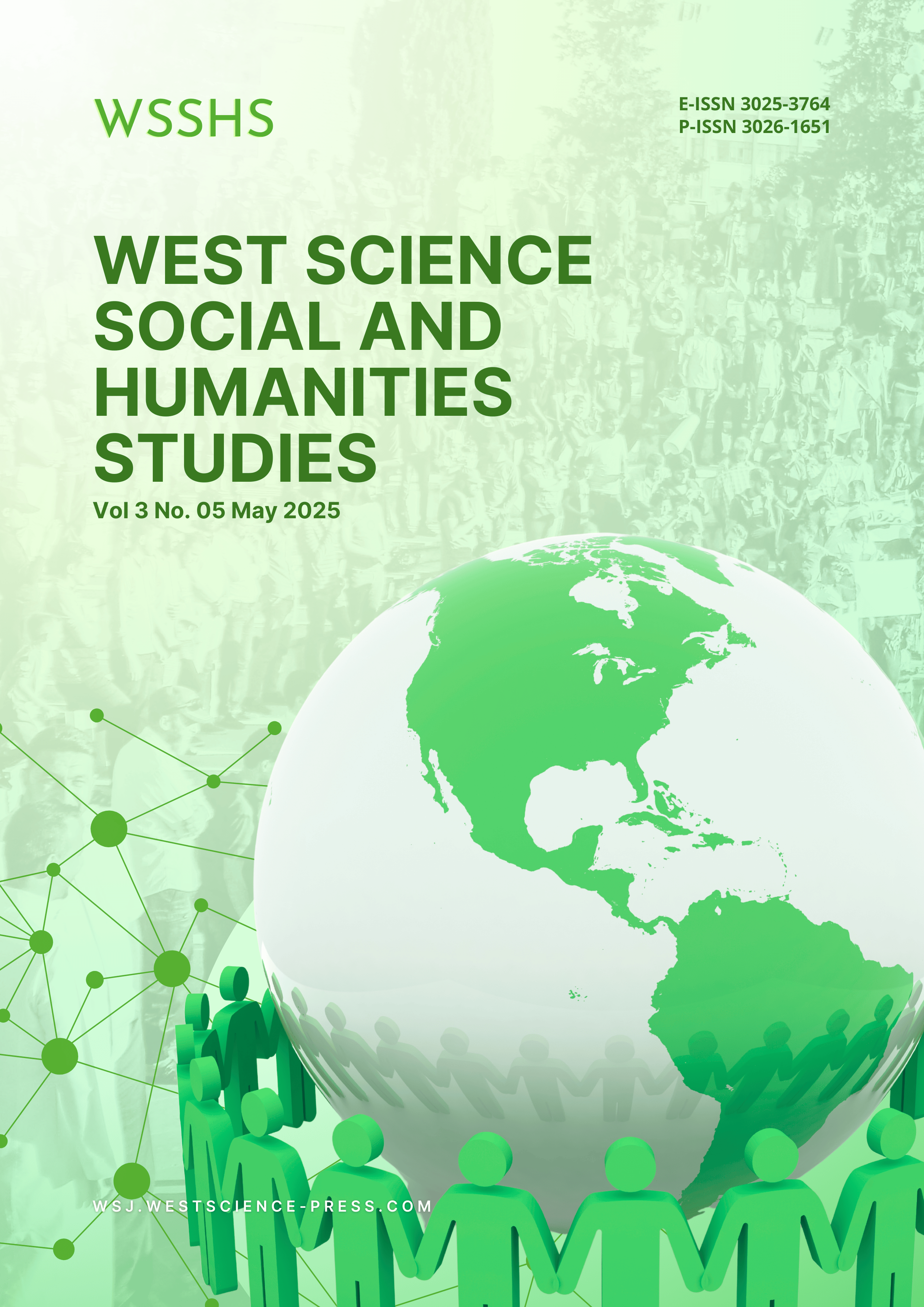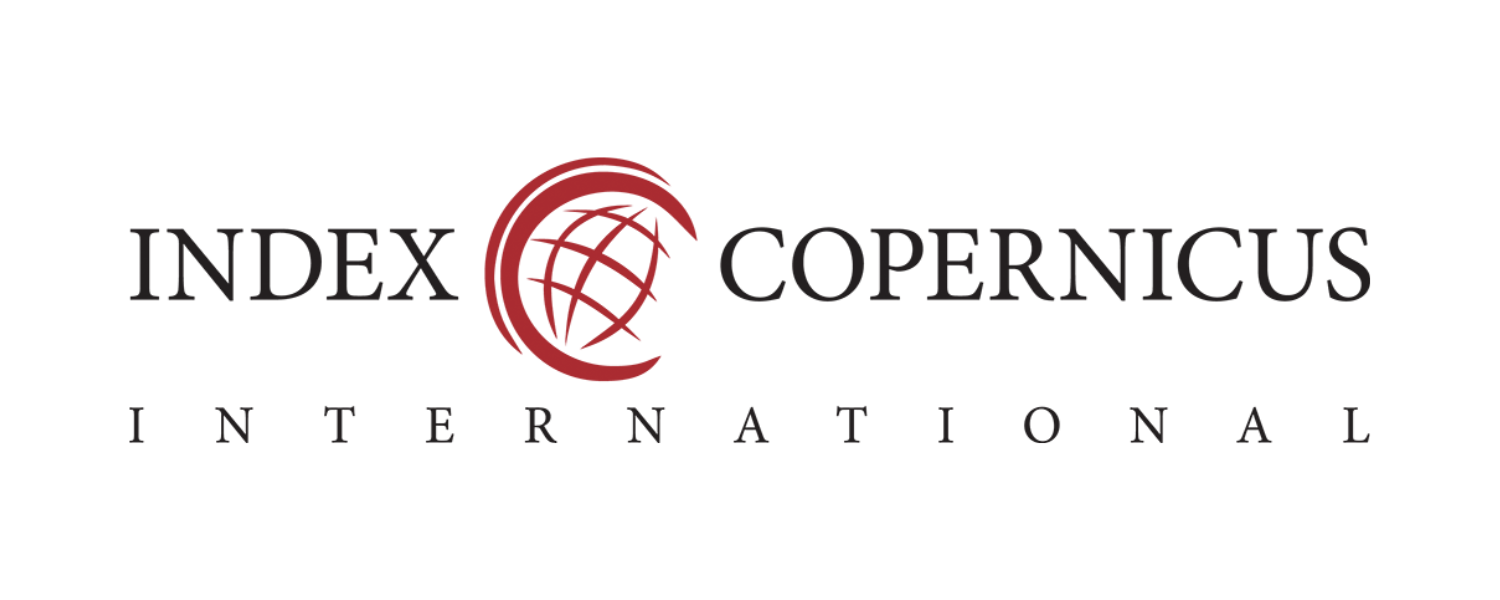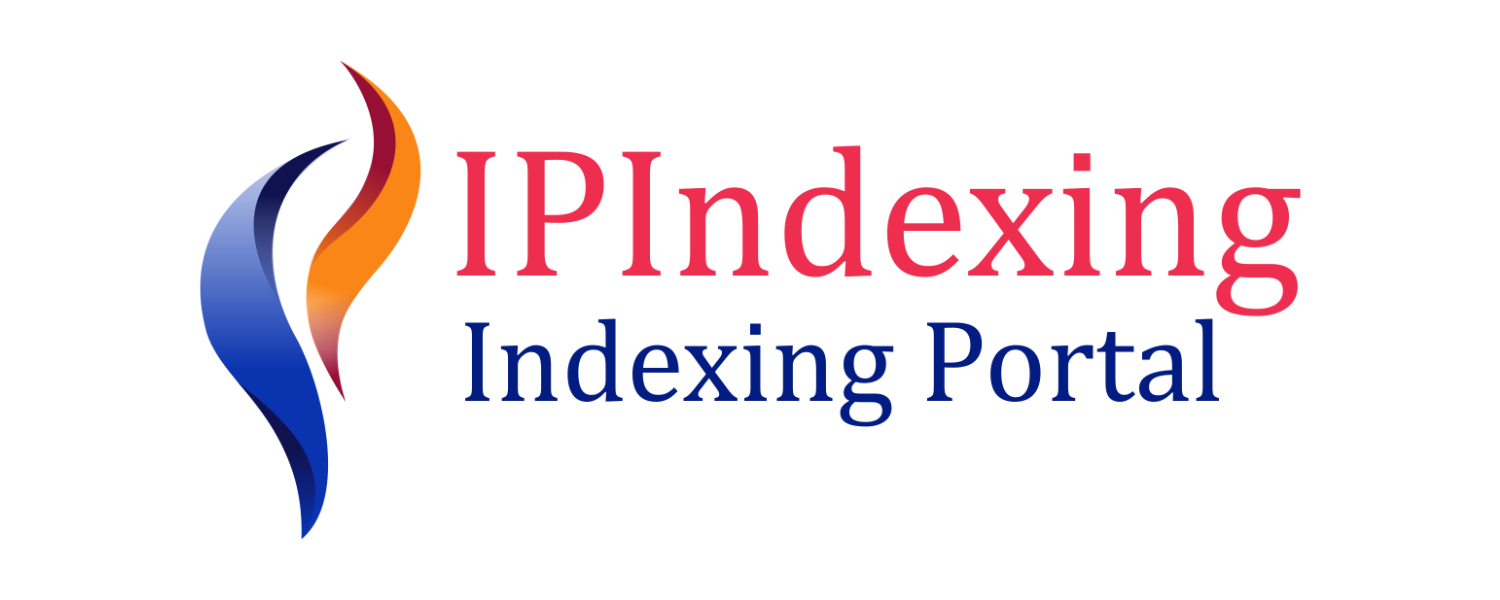The Cultivation and Development of Regional Languages in the Era of Smart Society 5.0
DOI:
https://doi.org/10.58812/wsshs.v3i05.1885Keywords:
Regional Languages, Smart Society 5.0, Cultural Preservation, Digital Technology, Language CommunitiesAbstract
This study aims to examine the strategies for cultivating and developing regional languages within the context of Smart Society 5.0; a society that places humans at the center of technological innovation. Regional languages are vital cultural assets that reflect local identity and values. However, amid the currents of globalization and the dominance of national and foreign languages in digital spaces, many regional languages are experiencing a decline in speakers, particularly among the younger generation. This research employs a descriptive qualitative approach through a literature review of journal articles, books, policy documents, and official reports. The findings indicate that regional language development through school-based local content, teacher training, and community involvement proves effective when supported by strong policies and the use of digital technology. Educational apps, online dictionaries, and multimedia content present significant opportunities to engage the interest of younger generations. The role of cultural communities, traditional institutions, and local governments is also crucial in revitalizing the function of regional languages in daily life. Therefore, preservation strategies must integrate cultural, educational, and technological approaches in a sustainable manner. This study recommends a community-based collaborative model and a digital ecosystem as adaptive preservation strategies for the challenges of the Smart Society 5.0 era.
References
[1] S. L. Ding, “Rethinking Marginalization and Heritage Language Vitality in Multilingual Families,” International Journal of Bilingualism, vol. 27, no. 5, pp. 603-617, 2023, doi: 10.1177/13670069221111861
[2] M. I Maulana, “Menurunnya Minat Tulisan Aksara Jawa di Lingkup Mahasiswa Sejarah Peradaban Islam UIN Sunan Ampel Surabaya,” HEURISTIK: Jurnal Pendidikan Sejarah, vol. 3, no. 2, pp. 62-76, 2023.
[3] A. Kukulska-Hulme, R. A. Giri, S. Dawadi, K. R. Devkota, and M. Gaved, “Languages and Technologies in Education at School and Outside of School: Perspectives from Young People in Low-Resource Countries in Africa and Asia,” Frontiers in Communication, vol. 8, pp. 1081155, 2023, doi: 10.3389/fcomm.2023.1081155
[4] Z. Lischer-Katz, “The Emergence of Digital Reformatting in the History of Preservation Knowledge: 1823-2015,” Journal of Documentation, vol. 78, no. 6, pp. 1249-1277, 2022, doi: 10.1108/JD-04-2021-0080
[5] Badan Pengembangan dan Pembinaan Bahasa, Revitalisasi Bahasa Daerah Berbasis Sekolah dan Komunitas, Kemendikbudristek Gelar Pelatihan Guru Master di NTB. https://badanbahasa.kemendikdasmen.go.id/berita-detail/3878/revitalisasi-bahasa-daerah-berbasis-sekolah-dan-komunitas-kemendikbudristek-gelar-pelatihan-guru-master-di-ntb, 2023.
[6] E. Krisnanik, B. S. Yulistiawan, I. H. Indriana, and B. Yuwono, “Pemanfaatan Teknologi Informasi dan Komunikasi (TIK) dalam Pelestarian Budaya dan Wujud Bela Negara,” Jurnal Bela Negara, vol. 1, no. 2, pp. 83-98, 2023, doi: 10.70377/jbn.v1i2.7317
[7] R. Kuhn, “The Indigenous Languages Technology (ILT) Project at the National Research Council of Canada, and its Context,” Linguapax Review 2021, vol. 9, pp. 85-104, 2022.
[8] L. V. Aragon, “The Problems of Owning Culture: Global Intellectual Property Law and ‘Traditional’ Community Arts in Indonesia,” Asian Ethnicity, vol. 13, no. 4, pp. 399-417, 2012, doi: 10.1080/14631369.2012.710077
[9] A. S. Abdullah, “Ethnomathematics in Perspective of Sundanese Culture,” Journal on Mathematics Education, vol. 8, no. 1, pp. 1-16, 2017, doi: 10.22342/jme.8.1.3877.1-15
[10] F. Hassan, “Cultural Heritage, Empowerment and the Social Transformation of Local Communities,” In V. Higgins & D. Douglas (Eds.), Communities and Cultural Heritage (pp. 23-35). London: Routledge, 2020.
[11] R. Wu, R. Alvarado, P. Méndez, and B. Tillaguango, “Impact of Informational and Cultural Globalization, R&D, and Urbanization on Inequality,” Journal of the Knowledge Economy, vol. 15, no. 1, pp. 1666-1702, 2024, doi: 10.1007/s13132-023-01146-7
[12] C. Ma, T. Somrak, S. Manajit, and C. Gao, “Exploring the Potential Synergy between Disruptive Technology and Historical/Cultural Heritage in Thailand’s Tourism Industry for Achieving Sustainable Development in the Future,” International Journal of Tourism Research, vol. 26, no. 5, pp. e2759, 2024, doi: 10.1002/jtr.2759
[13] H. Winschiers-Theophilus, T. Zaman, and C. Stanley, “A Classification of Cultural Engagements in Community Technology Design: Introducing a Transcultural Approach,” Ai & Society, vol. 34, pp. 419-435, 2019, doi: 10.1007/s00146-017-0739-y
[14] J. Gao, and B. Wu, “Revitalizing Traditional Villages through Rural Tourism: A Case Study of Yuanjia Village, Shaanxi Province, China,” Tourism Management, vol. 63, pp. 223-233, 2017, doi: 10.1016/j.tourman.2017.04.003
[15] R. J. Coombe, “Possessing Culture: Political Economies of Community Subjects and Their Properties,” In M. Busse and V. Strang (Eds.), Ownership and Appropriation (pp. 105-127). London: Berg Publishers, 2011.
[16] P. Jones, “Formalizing the Informal: Understanding the Position of Informal Settlements and Slums in Sustainable Urbanization Policies and Strategies in Bandung, Indonesia,” Sustainability, vol. 9, no. 8, pp. 1436, 2017, doi: 10.3390/su9081436
[17] T. B. Pepinsky, M. R. Abtahian, and A. Cohn, “Urbanization, Ethnic Diversity, and Language Shift in Indonesia,” Journal of Multilingual and Multicultural Development, vol. 45, no. 7, pp. 2503-2521, 2024, doi: 10.2139/ssrn.3529422
[18] P. J. Meighan, “Decolonizing the Digital Landscape: The Role of Technology in Indigenous Language Revitalization,” AlterNative: An International Journal of Indigenous Peoples, vol. 17, no. 3, pp. 397-405, 2021, doi: 10.1177/11771801211037672
[19] P. Kasinathan, R. Pugazhendhi, R. M. Elavarasan, V. K. Ramachandaramurthy, V. Ramanathan, S. Subramanian, S. Kumar, K. Nandhagopal, R. R. V. Raghavan, S. Rangasamy, R. Devendiran, and M. H. Alsharif, “Realization of Sustainable Development Goals with Disruptive Technologies by Integrating Industry 5.0, Society 5.0, Smart Cities and Villages,” Sustainability, vol. 14, no. 22, pp. 15258, 2022, doi: 10.3390/su142215258
[20] M. C. Tavares, G. Azevedo, and R. P. Marques, “The Challenges and Opportunities of Era 5.0 for a More Humanistic and Sustainable Society: A Literature Review,” Societies, vol. 12, no. 6, pp. 149, 2022, doi: 10.3390/soc12060149
[21] K. Ariansyah, A. B. Setiawan, A. Hikmaturokhman, A. Ardison, and D. Walujo, “Big Data Readiness in the Public Sector: An Assessment Model and Insights from Indonesian Local Governments,” Journal of Science and Technology Policy Management, vol. 16, no. 2, pp. 252-278, 2025, doi: 10.1108/JSTPM-01-2023-0010
[22] N. Hanna, “A Role for the State in the Digital Age,” Journal of Innovation and Entrepreneurship, vol. 7, no. 5, pp. 1-16, 2018, doi: 10.1186/s13731-018-0086-3
[23] Detik.com, Survei: Penutur Bahasa Daerah antara Generasi Pre Boomer-Post Gen Z Semakin Berkurang. https://www.detik.com/edu/detikpedia/d-7079624/survei-penutur-bahasa-daerah-antara-generasi-pre-boomer-post-gen-z-semakin-berkurang, 2023.
[24] E. Triastuti, “Subverting Mainstream in Social Media: Indonesian Gay Men’s Heterotopia Creation through Disidentification Strategies,” Journal of International and Intercultural Communication, vol. 14, no. 4, pp. 284-304, 2021, doi: 10.1080/17513057.2021.1952292
[25] M. O. Hamid, “Globalisation, English for Everyone and English Teacher Capacity: Language Policy Discourses and Realities in Bangladesh,” In B. Lingard, (Ed.), Globalisation and Education (pp. 207-228). London: Routledge, 2020.
[26] I. Rani, and A. Fiddienika, “Ancaman Pergeseran Bahasa Daerah dalam Era Globalisasi: Tinjauan Kasus di Kabupaten Barru,” Jurnal Bastra (Bahasa dan Sastra), vol. 9, no. 4, pp. 723-732, 2024, doi: 10.36709/bastra.v9i4.533
[27] J. E. Gonzalez, J. Liew, Y. Zou, G. Curtis, and D. Li, ““They’re going to Forget about Their Mother Tongue”: Influence of Chinese Beliefs in Child Home Language and Literacy Development,” Early Childhood Education Journal, vol. 50, no. 7, pp. 1109-1120, 2022, doi: 10.1007/s10643-021-01241-x
[28] S. A. Sakti, S. Endraswara, and A. Rohman, “Revitalizing Local Wisdom within Character Education through Ethnopedagogy Apporach: A Case Study on a Preschool in Yogyakarta,” Heliyon, vol. 10, pp. e31370, 2024, doi: 10.1016/j.heliyon.2024.e31370
[29] N. Yosfiani, and S. Nurhayati, “Implementation of Early Childhood Regional Language (Sundanese) Learning through Movement and Song Methods,” Hikmah: Jurnal Pendidikan Islam, vol. 12, no. 2, pp. 297-306, 2023.
[30] S. Marni, and D. Eliza, Pengenalan Sains dan Literasi Berbasis Budaya Alam Minangkabau dalam Pembelajaran Anak Usia Dini. Sidoarjo: Zifatama Jawara, 2022.
[31] A. Sakurai, M. B. F. Bisri, T. Oda, R. S. Oktari, Y. Murayama, N. Nizammudin, and M. Affan, “Exploring Minimum Essentials for Sustainable School Disaster Preparedness: A Case of Elementary Schools in Banda Aceh City, Indonesia,” International Journal of Disaster Risk Reduction, vol. 29, pp. 73-83, 2018, doi: 10.1016/j.ijdrr.2017.08.005
[32] J. Tao, and X. A. Gao, “Teaching and Learning Languages Online: Challenges and Responses,” System, vol. 107, pp. 102819, 2022, doi: 10.1016/j.system.2022.102819
[33] H. Spitzer, and J. Twikirize, “Social Innovations in Rural Communities in Africa’s Great Lakes Region. A Social Work Perspective,” Journal of Rural Studies, vol. 99, pp. 262-271, 2023, doi: 10.1016/j.jrurstud.2021.10.013
[34] T. Martin, and I. Thomson, “Adaptive Capacity in the Pacific Region: A Study of Continuous Professional Development for In-Service Teachers in Kiribati,” Asia-Pacific Journal of Teacher Education, vol. 46, no. 1, pp. 6-21, 2018, doi: 10.1080/1359866X.2017.1350829
[35] N. Nurjanah, Y. T. Herlambang, B. Hendrawan, and G. Gandana, “Regional Language Education in the Era of the Industrial Revolution Era 4.0: An Idea about Education in the Techno-pedagogy Perspective,” In Journal of Physics: Conference Series (Vol. 1477, No. 4, pp. 042068). IOP Publishing, 2020, doi: 10.1088/1742-6596/1477/4/042068
[36] T. T. Wu, “Improving the Effectiveness of English Vocabulary Review by Integrating ARCS with Mobile Game‐Based Learning,” Journal of Computer Assisted Learning, vol. 34, no. 3, pp. 315-323, 2018, doi: 10.1111/jcal.12244
[37] D. Kristianto, and A. A. Gozali, Ensiklopedia Penulis Sastra di Provinsi Banten. Serang: Kantor Bahasa Provinsi Banten, 2020.
[38] S. Mohan, and A. Punathambekar, “Localizing YouTube: Language, Cultural Regions, and Digital Platforms,” International Journal of Cultural Studies, vol. 22, no. 3, pp. 317-333, 2019, doi: 10.1177/1367877918794681
[39] J. Anderson, Y. C. Chung, and V. Macleroy, “Creative and Critical Approaches to Language Learning and Digital Technology: Findings from a Multilingual Digital Storytelling Project,” Language and Education, vol. 32, no. 3, pp. 195-211, 2018, doi: 10.1080/09500782.2018.1430151
[40] F. Sun, C. Ye, and X. Feng, “Fostering Cultural Innovation in the Digital Age: Unveiling the Competitive Edge of Dialect Group Culture,” Journal of the Knowledge Economy, vol. 15, no. 3, pp. 11724-11749, 2024, doi: 10.1007/s13132-023-01534-z
[41] A. Corres, M. Rieckmann, A. Espasa, and I. Ruiz-Mallén, “Educator Competences in Sustainability Education: A Systematic Review of Frameworks,” Sustainability, vol. 12, no. 23, pp. 9858, 2020, doi: 10.3390/su12239858
[42] R. A. Priatama, K. Onitsuka, E. Rustiadi, and S. Hoshino, “Social Interaction of Indonesian Rural Youths in the Internet Age,” Sustainability, vol. 12, no. 1, pp. 115, 2019, doi: 10.3390/su12010115
[43] M. Enciso-Santocildes, A. Vidu, and L. Gómez-Urquijo, “Drivers for a Cross-Sector Successful Collaboration: The Basque Country Model of Action,” International Journal of Social Economics, vol. 47, no. 2, pp. 268-284, 2020, doi: 10.1108/IJSE-06-2019-0378
[44] S. Rozi, F. Noor, I. H. Gayatri, M. Pabottingi, and M. S. Widjojo, Politik Identitas: Problematika dan Paradigma Solusi Keetnisan Versus Keindonesiaan di Aceh, Riau, Bali dan Papua. Jakarta: Bumi Aksara, 2021.
[45] I. Ilmi, K. Muslim, and N. Aziz, “Efektivitas Peningkatan Mutu Lulusan Melalui Program Pendidikan STISIP Tasikmalaya.” Benchmarking, vol. 9, no. 1, pp. 1-15, 2025, doi: 10.30821/benchmarking.v9i1.23506
[46] I. Siregar, “Effective and Efficient Treatment of Regional Language Preservation Strategies in the Nusantara,” Journal of Humanities and Social Sciences Studies, vol. 4, no. 2, pp. 16-22, 2022, doi: 10.32996/jhsss.2022.4.2.3
[47] E. B. Besolova, F. O. Abaeva, and Z. N. Zangieva, “The language and Values of Traditional Culture as a Condition for the Preservation and Ethno-Cultural Development of the Region,” In International Session on Factors of Regional Extensive Development (FRED 2019),” (pp. 386-390). Atlantis Press, 2020.
[48] A. Dudung, A. Sudrajat, U. Hasanah, L. H. Winingsih, P. Suprastowo, A. Irmawati, and N. Listiawati, Model Penyelenggaraan Pendidikan untuk Daerah Terdepan, Terluar, dan Tertinggal yang Mengakomodasi Keberagaman Kondisi Lingkungan, Sosial, dan Budaya Setempat (Berbasis Kearifan Lokal). Jakarta: Pusat Penelitian Kebijakan Pendidikan dan Kebudayaan, Badan Penelitian dan Pengembangan, Kementerian Pendidikan dan Kebudayaan, 2018.
Downloads
Published
Issue
Section
License
Copyright (c) 2025 Ida Bagus Rai Putra, Gusti Nyoman Mastini, I Wayan Mandra, Gek Diah Desi Sentana, I Gede Bagus Wisnu Bayu Temaja

This work is licensed under a Creative Commons Attribution-ShareAlike 4.0 International License.




















 Instagram
Instagram 